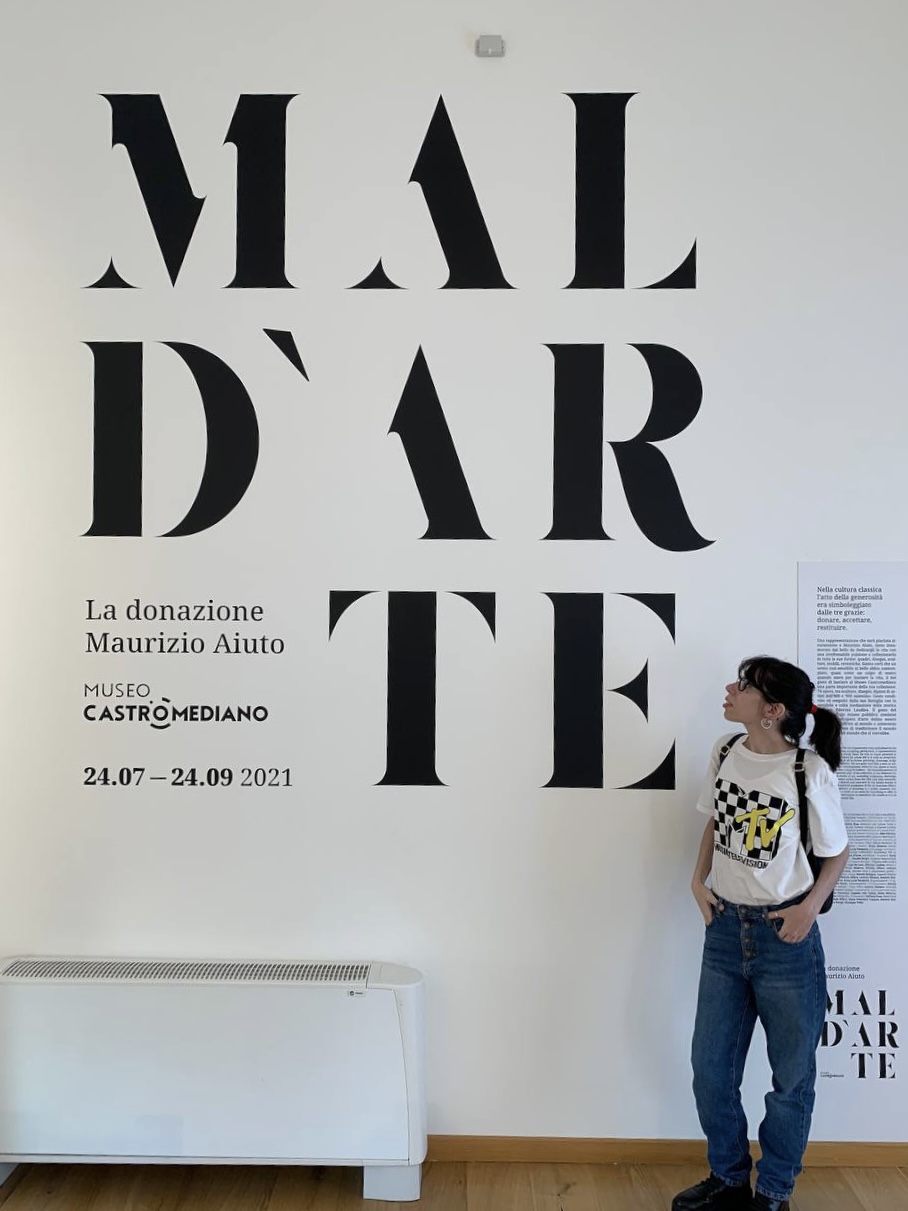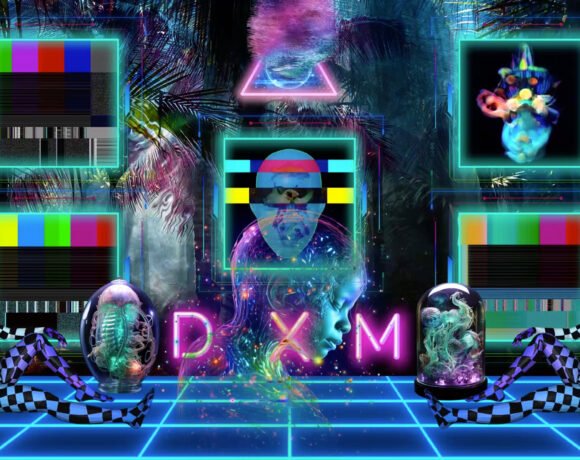Tradition, art and culture are the elements that make the Corciano Festival one of the most important annual and iconic Umbrian cultural events. This Festival is renewed every year but without get away from its history and territory. This year, the 57th edition, from 7 to 15 August, is dedicated to Dante Alighieri, commemorating the 700th anniversary of his death. During this Festival, Corciano is hosting, until 29 August, the exhibition “+ Divenire. Dove inizia il nuovo esodo’’ conceived, curated and coordinated by Gabriele Perretta, whom we had the pleasure of interviewing.
Antonella Buttazzo: Let’s start from the beginning. When did you decide to become a curator? Was an exhibition which you impressed so much to understand that this would be yours?
Gabriele Perretta: What really strikes me about your question is the reference to the work itself. Let’s say that modernity has struggled to configure the curator as a “worker of artistic knowledge” and this figure has erroneously emerged as a replacement for the total role of criticism. Historically, the critic had a role as curator, but this is not enough to consider the curator as critical. The curator-manager is a different role from the curator-critic, who persisted until the 1970s, for me. The curator, in my militant visions and projects, isn’t classifiable in the educational-academic world, nor in the managerial world. But History, from the 1980s on, has turned curatorial work into flexible work within the cultural industry, and therefore since I thought about and created the exhibition Città senza confine (1984), my story has been a whole comparison with the non-working work of cultural heritage and pre and post-media art productions. So, there was no decision, but a direct consequence of the work of critic and (contemporary) militant historian. Two exhibitions, that particularly impressed me were: Machines célibataire (1975) and Monte Verità (1978) by Harald Szeemann.
Let’s talk about the widespread exhibition “+ Divenire. Dove inizia il nuovo esodo”. Can you tell us more about the organizational process?
The exhibition is clear: it draws on the relevance of gender metaphor, to affirm that art has always dialogued with genres and even more in the current era, contemporary art represents all possible genres in the making… And all this is not just a matter of shapes and styles, but of relationships between languages and life. In 1988, when I was a young editor of Flash Art magazine, I conducted an inquiry into the Art, the artists and the ‘68, interviewing the major representatives of the neo-avant-garde and the two most related issues linked to art and the problems of 1968’s generation were feminism and ecology. But the contradictions of Carla Lonzi’s Self-portrait also emerged from that inquiry, which demands sectarian subjectivism in perfect contradiction with the beginning of thought of difference – traceable in the application of Foucalt and Barthes on the nameless author- and retains a strange idealism which on the one hand opens the doors to the postmodern generation and, on the other, to that of civil absolutism of Sputiamo su Hegel!. + Divenire records the difference within a complex and multiple emerging line that addresses a subtle criticism of rigid thought and absolute “liberal differentialism”. This is a work that manages to do well both post-relational art, not at all fringe, and this media practice is anything but “against communication”. + Divenire is the exodus and the gender conflict, it is the voice of the different generations of “women & other artists”, who have always felt very close the formalism of a closed artistic language, which sums up “form and identity”, threatening the recognition of work and free existence. Free, against any expressive and medial enconding.
Starting from the figure of the Smiths frontman, Morrissey, in your opinion, how important is it to make the difference today? And especially: how much an artist can make the difference in this, let me say, ”crazy ” contemporary world?
Thinking of the Smiths and Morrisey, Derek Jarman and Pier Paolo Pasolini, the dedication is transversal and starts from the writing and visualization of the feminine to reacht the drift of all genres and all the stories in transit and “in the Benjaminian inorganic “(The sex appeal of the inorganic). Starting from a famous photo from 1936 by Dorothea Lange, the collective part of the exhibition, goes up to the present day by exposing all the converging and evolving multimedia techniques: Karin Andersen / Christian Rainer, Yumi Karasumaru, Mirella Bentivoglio, Tomaso Binga, Rita Casdia , Elisa Cella, Maurizio Cesarini, Mauro Di Michelangelo, Giosetta Fioroni, Paola Gandolfi, Urs Luthi, Paola Mongelli, Elisa Montessori, Yasumasa Morimura, Shirin Neshat, Lina Pallotta, Lucia Patalano, Giulia Piscitelli, Renata Prunas, Cindy Sherman, Francesca Woodman, Lucia Gangheri. Instead, the part of the monographs exposes the proposals of Anna Utopia Giordano, Annalaura di Luggo, Antonello Marrazzo and Nello Teodoro and then with an unusual section linked to musical writing and the identity flow of sound, exposes: Sylvano Bussotti, Fabrizio De Rossi Re, Daniele Lombardi, Marco Betta, Stefano Taglietti, Riccardo Vaglini, Andrea Mannucci. Among the posters and banners scattered in the village I can mention: Pamela Bargnesi, Carlo Bevilacqua, Cast / gpmutoid, Dormice, Emmeline Lestrange-Limoge, Mario Matto & Co, Generic Art History and Promotion (GAHP), Antonella Mazzoni, Rossella Petronelli, Fathi Hassan, gp meta-gens mutoid. Becoming is the very meaning of the theme of art as an insuperable need. Artistic life is the place where the need to express an idea in progress, in all the forms of sensitive expression is fully inscribed. The art of becoming is a necessity, because it is the effort to achieve total fluidity. In short, freedom calls for concrete fulfilment, without disregarding the sensitive and vital form.
We talked about ”becoming”. Can we associate this verb with a ”near” future? Let me explain: how do you see the future of art, understood as a binomial artist-exhibition? And in reference to these two difficult years that we are going through, would you have any ideas to encourage and renew the world of exhibitions?
Starting from the slogan of becoming is in itself an incentive, we need more reflection exhibitions, research and less “blockbuster” packages. This does not mean that the sector must be halved, but rather at the level of employement it must be strengthened, protected and removed from liberalist flexibility. If it is true, we are faced with the restructuring of a cultural industry that is truly enterprise, industry, workshop, work center, which respects all the working and professional figures in the sector, and doesn’t control with a repressive bosses and commanded (from constitutionalist excuse) a labor market from hunger and shame for critics, curators, organizers, distributors, connoisseurs etc., + Divenire is synonymous with freedom, dignity and recognition for all.
Antonella Buttazzo
Info:
 Nello Teodori, Misura la temperatura dell’opera d’arte site specific, 1991-2021, courtesy the artist
Nello Teodori, Misura la temperatura dell’opera d’arte site specific, 1991-2021, courtesy the artist
 Lina Pallotta, Marco & Porpora, Roma 1991© Lina Pallotta, courtesy the artist
Lina Pallotta, Marco & Porpora, Roma 1991© Lina Pallotta, courtesy the artist
 Paola Gandolfi, Machine Spider, olio su tela, 2005, courtesy the artist
Paola Gandolfi, Machine Spider, olio su tela, 2005, courtesy the artist
 Anna Utopia Giordano, Abhra, installation view, Corciano 2021, courtesy the artist
Anna Utopia Giordano, Abhra, installation view, Corciano 2021, courtesy the artist
 Paola Mongelli, Tell me moon (detail), 2016, fine art inkjet print, diptych cm 60 x 80 each, courtesy the artist
Paola Mongelli, Tell me moon (detail), 2016, fine art inkjet print, diptych cm 60 x 80 each, courtesy the artist

After obtaining the high school languages diploma, she continued her studies graduating in Art History at the University of Salento, with a bilingual thesis on the Pre-Raphaelites. Since then, she has been actively contributing as a columnist and collaborator with national blogs and with local magazines and TV programs.






NO COMMENT